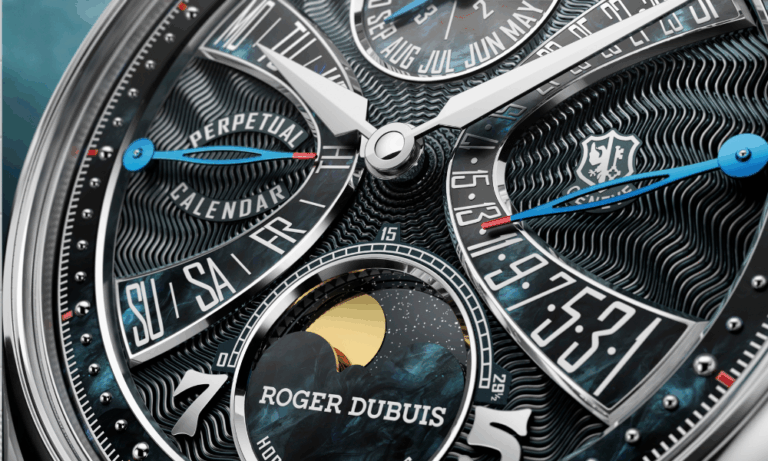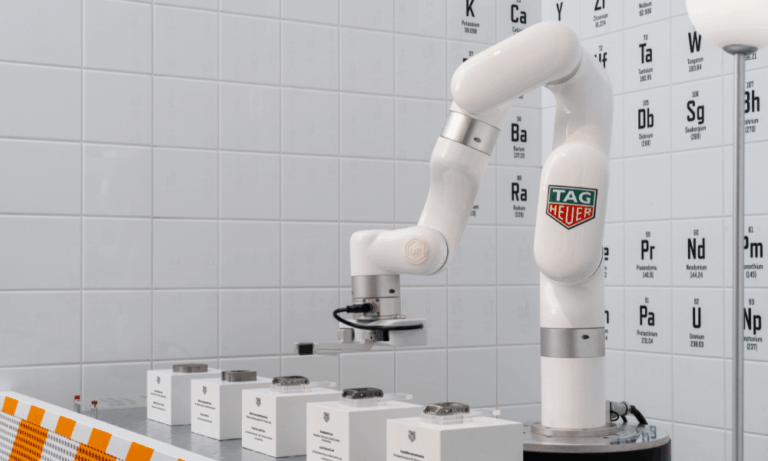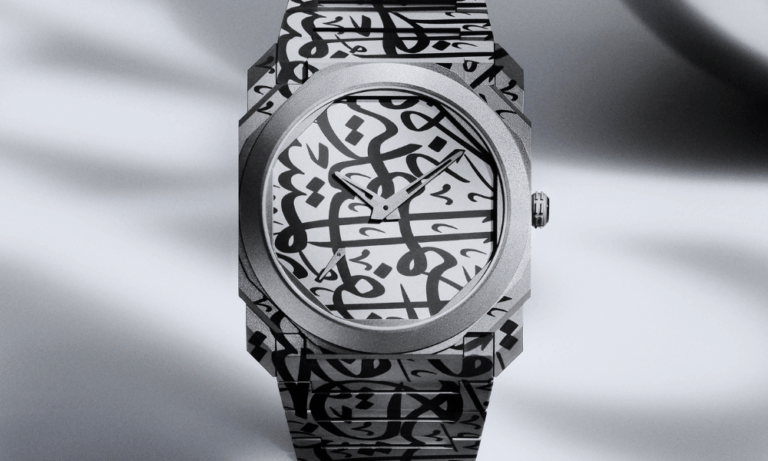Leica has always been about time. From freezing the decisive instant in photography to the precise tick of a mechanical watch, time has defined the brand’s story. At Dubai Watch Week 2025, Leica reaffirmed this philosophy with a bold statement: watchmaking is now a central pillar of its future.
The brand’s presence at this year’s event was marked by an exclusive panel discussion titled “Where Time and Photography Meet: The Leica Watch Story”, as well as a private VIP dinner at The Lana. Together, these activations showcased how Leica’s DNA of precision, innovation, and storytelling flows seamlessly into the world of horology.
From the debut of the Leica ZM 1 and ZM 2 to limited-edition straps and contemporary dial innovations, the event demonstrated that Leica Watches are more than instruments, they are extensions of the brand’s heritage, blending technical mastery with aesthetic sophistication, and capturing moments both on camera and on the wrist.
BURO sits down with Dr. Andreas Kaufmann, Chairman of the Supervisory Board and Majority Shareholder of Leica Camera AG, the world-renowned German brand synonymous with precision engineering and timeless design. Under his leadership, Leica has successfully expanded its legacy beyond photography into new creative fields, including watchmaking.

Dr. Kaufmann’s vision has been instrumental in shaping Leica’s long-term strategy, reinforcing the brand’s position as a global icon of craftsmanship and innovation. With a deep passion for both photography and horology, he has championed Leica Watches as a natural extension of the brand’s DNA, bridging the art of capturing moments with the art of measuring time. His stewardship continues to ensure Leica’s relevance to a new generation of collectors and creatives, while preserving a heritage of excellence that spans more than 150 years.
In this exclusive interview, he shares insights into the philosophy, development, and design of Leica’s timepieces, revealing how the brand translates its legendary precision and storytelling into the world of horology.
LEICA HAS BEEN SYNONYMOUS WITH CAPTURING THE DECISIVE MOMENT IN PHOTOGRAPHY FOR OVER A CENTURY. HOW DOES THAT PHILOSOPHY TRANSLATE INTO LEICA WATCHES, AND WHAT EMOTIONS DO YOU HOPE WEARERS EXPERIENCE WHEN CHECKING THE TIME?
This booklet is actually something we created back in 2018, when we presented the project for the first time. Achim Heine, who designed the first series, the ZM1 and ZM2, had been a camera and optics designer for nearly a decade, and this was his mood board. You’ll see how the inspirations evolved into sketches, and then into the actual design language that shaped the first watches.
He aimed to translate key Leica elements into the watches in a very honest, very German way: no frills, no fuss, just pure engineering and functionality. We even have a word for it internally that means, no unnecessary decoration, no gimmicks.
Take the calendar function, for instance. Usually, you have to rotate the crown, hunt for the date position, turn it too far, go back, and so on. We thought: Why? So on our watches, you simply press a button and it adjusts. That’s it. Simple, intuitive, consistent with our philosophy. A camera is a storytelling machine. A watch, on the other hand, is a tool for time. But the idea of clarity and essentiality carries through both.
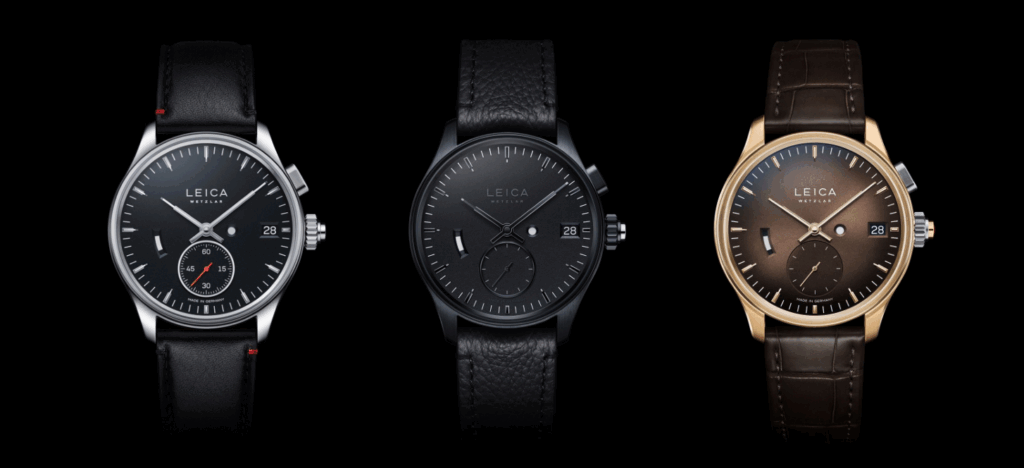
WITH THE ZM1 AND ZM2, YOU MENTIONED DEBATING PROPORTIONS DOWN TO TENTHS OF A MILLIMETER. HOW DOES THIS METICULOUS ATTENTION TO DETAIL COMPARE BETWEEN DESIGNING CAMERAS AND DESIGNING WATCHES?
On one hand, it’s easier, because a camera gives you more space to work with. A watch gives you 41 millimeters. But the challenge lies in the exterior design. For example, we worked nearly six months on the seconds display alone, balancing the proportions between the inner and outer rings to ensure perfect readability. Sometimes changing one-tenth or two-tenths of a millimeter made all the difference.
We also tested chromium rings around certain elements. It worked beautifully for the seconds, adding just enough presence. But when we tried it around the date window, it pulled too much attention away, it overwhelmed the dial. So we scrapped it. Designing a watch is essentially designing inside a constraint box. Every fraction of a millimeter matters.
LEICA WATCHES ARE POSITIONED AS RARE, ENDURING TIMEPIECES RATHER THAN MASS-PRODUCED OBJECTS. HOW DO YOU SEE THIS APPROACH SHAPING THE BRAND’S IDENTITY OVER THE NEXT DECADE?
Well, that’s a question we should revisit in 2031. But one thing is clear: Leica watches are absolutely not mass-produced. For the first series, we can produce around 250–300 pieces per year. That’s it.
The second series, the one you’re wearing, the Swiss-made collection, maxes out at around 500, maybe 800 pieces a year. So we’re not a “manufacture” in the strictest sense, the kind producing 25 watches a year by hand. But we’re certainly small-scale, intentional, and committed to growth without losing our identity. And although some may call it “niche,” Leica as a retail brand is far from niche. We’ve been in retail for nearly 20 years and have around 90 Leica stores worldwide. But in the watch world, yes, you could call it a specialty project. A very purposeful extension of the core brand.
AS SOMEONE WHO HAS GUIDED LEICA’S EVOLUTION FOR DECADES, WHAT WAS THE MOST CHALLENGING OR SURPRISING ASPECT OF ENTERING THE WATCHMAKING WORLD?
Getting the product truly ready for production. Designing a movement is one thing, some say it takes 10 years. Ours took seven. But the real test is productionizing it. You can design anything on paper. But if it can’t be manufactured reliably, consistently, and at scale, even small scale, it’s useless. There were a few hiccups along the way, of course, but we solved them.
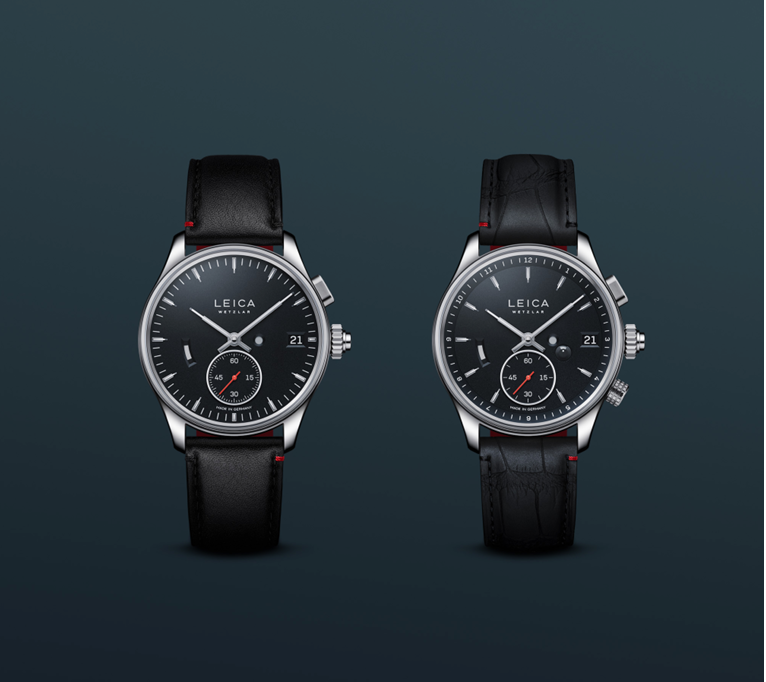
BEYOND TECHNICAL PRECISION, LEICA HAS ALWAYS BEEN ABOUT STORYTELLING. HOW DO LEICA WATCHES EXTEND THE NARRATIVE OF PHOTOGRAPHY INTO A NEW SENSORY EXPERIENCE?
First, the watch project is a story in itself. But there’s also a historical connection:
Ernst Leitz II, “the father” of Leica, was actually trained in the Swiss watch industry. So the link between Leica and watchmaking goes all the way back to the 19th century. And when you look inside a watch movement, with its tiny, beautifully engineered mechanical parts, there’s a real kinship with the precision mechanics inside a camera shutter. The scale may differ, but the philosophy is the same: function, precision, and purpose. Even today, many of the people who assemble Leica cameras in Wetzlar are trained watchmakers. It’s a shared craft. So yes, there is a connection, both technical and emotional, between measuring time and capturing time.
The second part of our conversation shifts focus to the operational and creative direction of Leica Watches with Henrik Ekdahl, Global Managing Director of Ernst Leitz Werkstätten GmbH (ELW). Headquartered in Wetzlar, Germany, ELW is majority-owned by Leica Camera AG and oversees the brand’s watch and accessories business.
Since joining ELW in March 2024, Ekdahl has brought extensive experience from the luxury and automotive sectors, including leadership roles at IWC Schaffhausen, BMW Group, Rolls-Royce, and Cartier. His long-standing connection with Leica began in the late 1990s, and under his guidance, ELW continues to uphold Leica’s commitment to craftsmanship, innovation, and heritage.
In this interview, Ekdahl offers an insider’s perspective on the design philosophy, technical development, and strategic vision behind Leica Watches, revealing how the brand translates its storied legacy into high-precision, collectible timepieces.

SO, LEICA WATCHES IS DESCRIBED AS A CONTINUATION OF THE STORY RATHER THAN AN EXPERIMENT. FROM A STRATEGIC PERSPECTIVE, HOW DO WATCHES COMPLEMENT LEICA’S LEGACY IN PHOTOGRAPHY AND PRECISION ENGINEERING?
At the very base stands Ernst Leitz I, who went to Neuchâtel in Switzerland and completed two years of watchmaking training. What he learned there, he brought back to Wetzlar and laid the foundation for the world’s best microscopes and other precision instruments.
One hundred years ago, the first serial 35mm camera was launched. Watchmaking was essential for the success of Leitz and later Leica. Because we have our own retail, we had credible reasons to enter watchmaking, extending the product portfolio without overextending. We needed to take small, credible steps into serious watchmaking, supported by Dr. Kaufmann, who loves watches and understands the time it takes to develop a new product segment.
CAN YOU SHARE MORE ABOUT THE DEVELOPMENT OF THE ZM COLLECTION, ESPECIALLY THE DESIGN CHOICES LIKE THE PUSH CROWN RESET AND DUAL-LAYERED DIALS THAT ECHO CAMERA MECHANICS?
The inspiration for the ZM1 and ZM2 series comes mainly from cameras. The push crown reminds you of a shutter release, and the power reserve evokes an M6 shutter or an aperture closing. Many details link back to Leica cameras, like the shape of the buttons.
We designed these watches not as gadgets, and certainly not as cameras for the wrist, they are Leicas for the wrist. The contemporary line draws inspiration from photography itself: tilted dials create different impressions, blue and orange combinations change with the light, and the dial is intended to fascinate because you’ll look at it hundreds of times a day. Everything is rooted in cameras and photography, but expressed through watch design.
LIMITED EDITIONS LIKE THE DUBAI-INSPIRED STRAP SEEM CENTRAL TO LEICA WATCHES. HOW DO YOU DECIDE WHICH CITIES OR INSPIRATIONS BECOME PART OF THESE COLLECTORS-FOCUSED RELEASES?
Actually, we don’t produce many limited editions. For example, we had a ZM1 in a titanium and gold mix with a brown dial, limited by production capacity. Another was the Urban Green, which sold out very quickly.
The Dubai strap is another example, but we haven’t made limited watches for other countries yet. Some markets, like China, would love country-specific versions, but we need to remain Leica-like and adhere to our principles. Resource constraints, both design-wise and production-wise, also limit how much we can do. So, while there may be more in the future, for now, limited editions remain carefully managed.
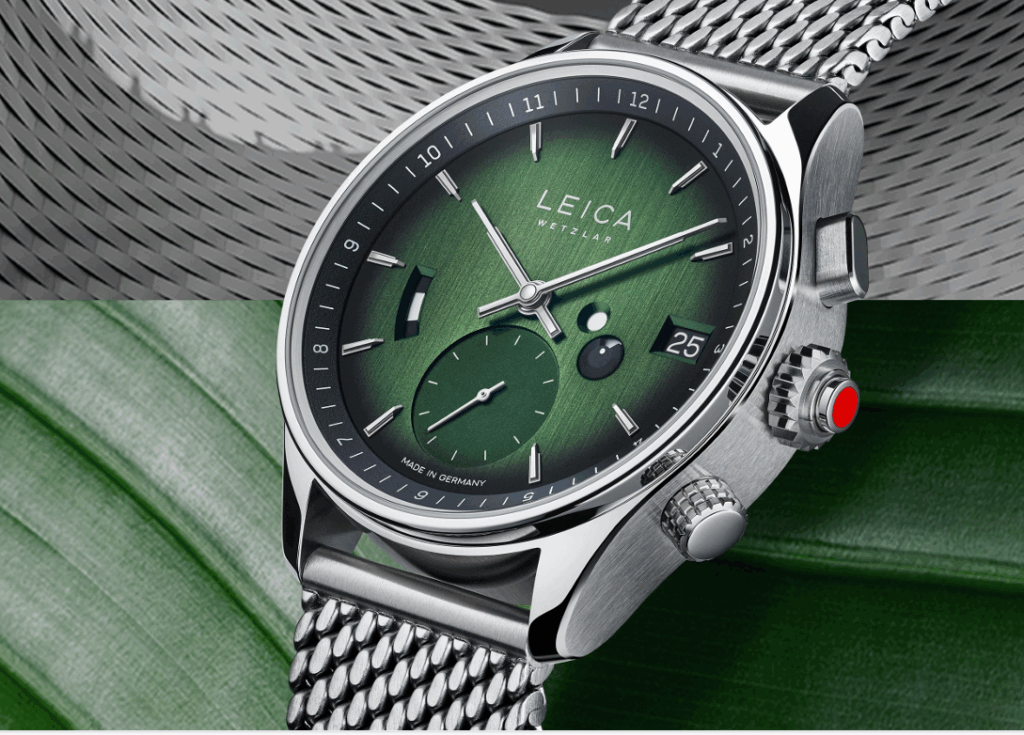
HOW DO YOU DESCRIBE YOUR CLIENTELE NOW? WHO IS THE LEICA CUSTOMER?
It’s a mix. It depends on the country and the activity of local stores. Our distribution is 99% through stores and e-commerce, with one retail location in Wetzlar.
Our customers include existing Leica users, camera enthusiasts, and people interested in mechanics. Many camera users are also watch lovers. In some markets, like Singapore, 50% of the watch buyers were new to the brand. We aim not only to serve existing customers but also to attract new ones into our stores and brand. Once they wear the watch, they experience Leica firsthand.
WITH YOUR EXPERIENCE IN LUXURY WATCHMAKING AND THE AUTOMOTIVE SECTOR, WHAT LESSONS FROM THOSE INDUSTRIES HAVE INFLUENCED LEICA WATCHES’ DESIGN AND POSITIONING?
I rejoined Leica two years ago, so the base was already set. My role is to develop and refine what exists. Working with brands like BMW, Rolls-Royce, Cartier, and IWC gave me an understanding of upmarket premium products, their design, how they are sold, communicated, and what customers expect.
This experience provides a foundation, combined with my long-term relationship with Leica, I’ve used Leica products for 28 years, so everything fits together naturally.
HOW DO YOU SEE LEICA WATCHES ATTRACTING A NEW GENERATION OF COLLECTORS WHILE STILL HONOURING THE BRAND’S HERITAGE AND VALUES OF POSITION, RARITY, AND AUTHENTICITY?
Collectors are important, but I’d prefer people who wear our watches every day. I remember when M6 limited editions went straight into bank vaults, unopened, that’s sad. Instruments should be used.
The ZM1 and ZM2 have substance and complications that appeal to collectors, but they are primarily designed for people who appreciate high-quality mechanical timepieces and want to use them. Collectors are welcome, but the ideal wearer is someone who actually enjoys the watch daily.
The movement itself is a draw for collectors, it’s complex and visible, unlike the closed backs of traditional watches like Rolex. At the same time, the functionality is pure German engineering: precise, practical, and elegant.
ALSO READ: GEN Z MEN ARE BANKING ON NOSTALGIA AND VINTAGE WATCHES ARE THEIR LATEST FIXATION.


